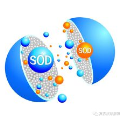RGB-D salient object detection(SOD) demonstrates its superiority on detecting in complex environments due to the additional depth information introduced in the data. Inevitably, an independent stream is introduced to extract features from depth images, leading to extra computation and parameters. This methodology which sacrifices the model size to improve the detection accuracy may impede the practical application of SOD problems. To tackle this dilemma, we propose a dynamic distillation method along with a lightweight framework, which significantly reduces the parameters. This method considers the factors of both teacher and student performance within the training stage and dynamically assigns the distillation weight instead of applying a fixed weight on the student model. Extensive experiments are conducted on five public datasets to demonstrate that our method can achieve competitive performance compared to 10 prior methods through a 78.2MB lightweight structure.
翻译:RGB-D显要物体探测(SOD)显示,由于数据中引入了更多的深度信息,在复杂的环境中,它优于探测。不可避免地,引入了独立的流以从深度图像中提取特征,从而导致额外的计算和参数。这种方法牺牲模型大小以提高探测精确度,可能会妨碍SOD问题的实际应用。为了解决这一难题,我们提出了一个动态蒸馏方法以及轻量框架,大大降低了参数。这个方法考虑了教师和学生在培训阶段的表现,并动态地分配了蒸馏重量,而不是对学生模型适用固定重量。对五个公共数据集进行了广泛的实验,以证明我们的方法能够通过78.2MB轻量结构实现与以前10个方法相比的竞争性性能。


